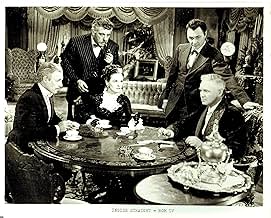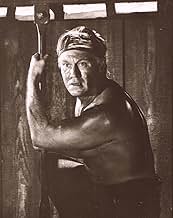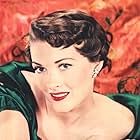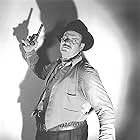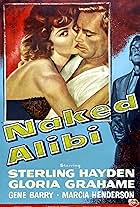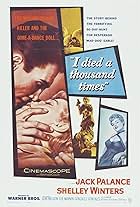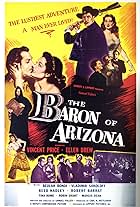Excellent character study, well written and acted. Movie opens with Ada trying to save her savings bank by winning a hand of five-card straight from ruthless wheeler-dealer McCool. If he wins, she loses the bank and depositors lose their money; if she wins, she gets enough from him to save the bank. It's the 19th century before depositor protection from the FDIC. Meanwhile, she has two kings, while McCool has possible straight depending on his hole card. So what's his hole card. Should she bet her bank and its depositors' savings that he doesn't have the inside straight. Bystanders advise her to consider her opponent's character before making a decision. At that point the film turns to a series of flashbacks, each revealing a side to the money-mad McCool's relations with others. But we won't find out the hole card til the end. In a sense, the man's moral core is reflected in the outcome of a poker hand.
I detail this opening because it sets up the movie's remainder in compelling fashion. As the flashbacks show, McCool appears driven by only one thing- money. However, a softer side emerges in his relationship with his two buddies (Johnny and Shocker) and his second wife Zoe. So perhaps his inner life is not as cut-and-dried as his many big money operations make it seem. Thus, a greater moral ambiguity emerges as the flashbacks progress, each peeling back a layer in McCool's troubled life. Credit under-rated screenwriter Guy Trosper for both the incisive screenplay and the story concept. A gander at his credits over the years demonstrates an outstanding talent.
Actor Brian is excellent as the central character, especially convincing as a ruthless operator. Surprisingly, McCambridge gets a bit of romance and exhibits flashes of sympathy as the put-upon Ada. At the same time, Chaney gets a likable role as the loyal Serbian sidekick Shocker, while Sullivan has a secondary part that may have been a studio add-on.
Anyway, the movie strikes me as something of an oddity coming from big budget MGM. The film itself is in b&w, but well mounted, particularly the crowd scenes. At the same time, it's an exception that neither of the two headliners has a particularly likable role, which is not the usual way of promoting headliner careers. But then 1951 was also a time when the studio was branching into darker themes under new honcho Dore Schary, and away from L.B. Mayer's sunny wholesome fare. That may explain the movie's hybrid status, somewhere between an A and B production.
All in all, the film strikes me as something of a sleeper, particularly in it's construction, theme, and absolutely appropriate ending. Perhaps it's the rather dour subject matter, and morally ambivalent leads that have reduced the 75-minutes to real obscurity. In my little book, however, the movie definitely merits a measure of re-discovery.



